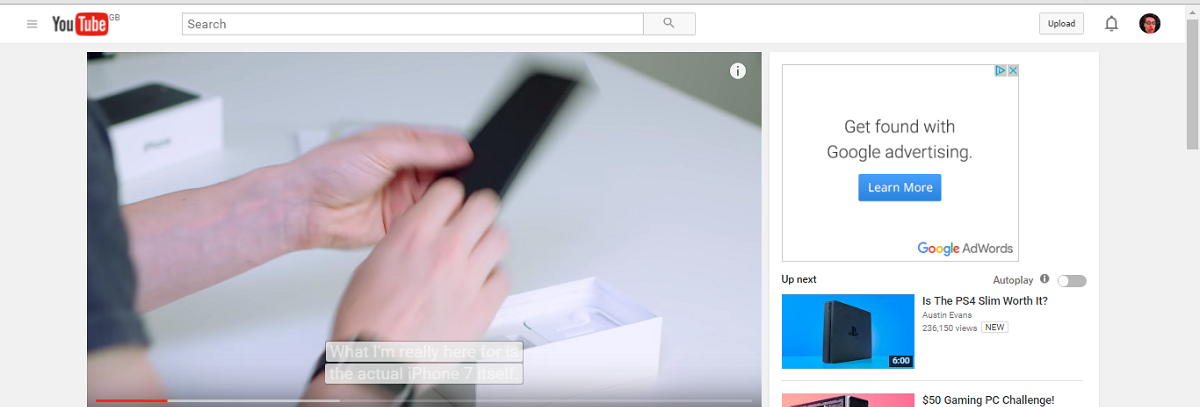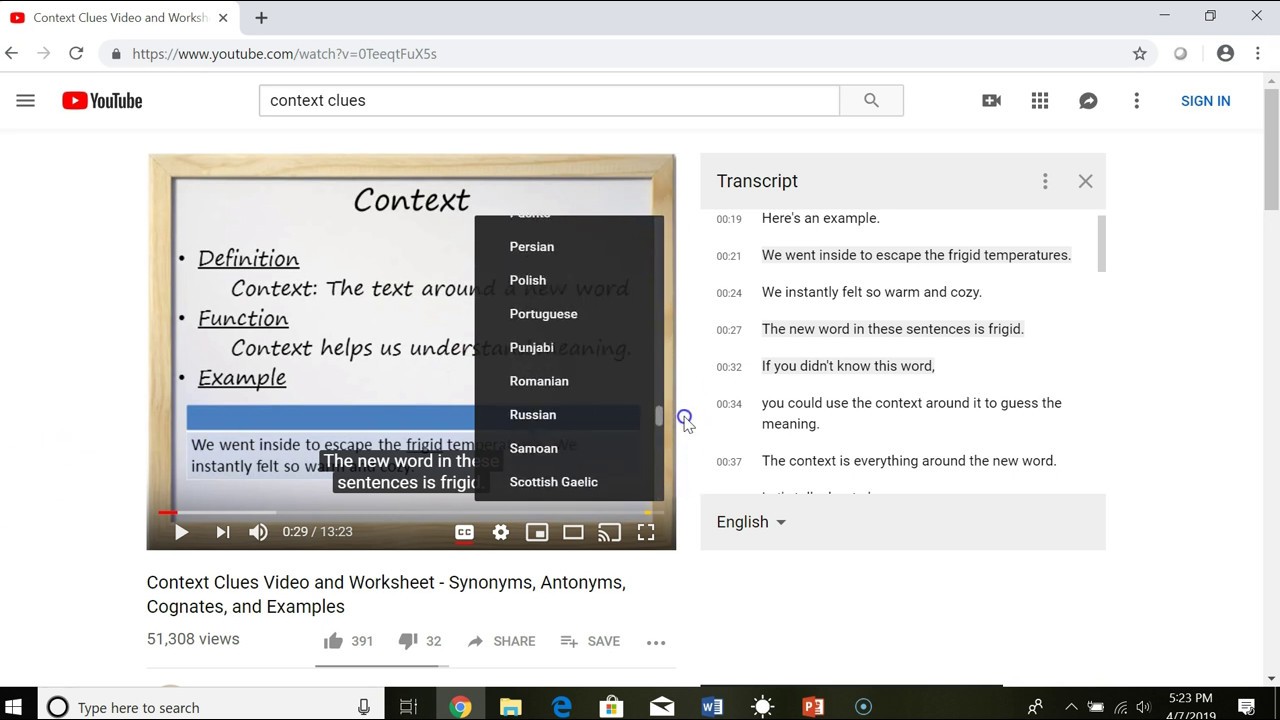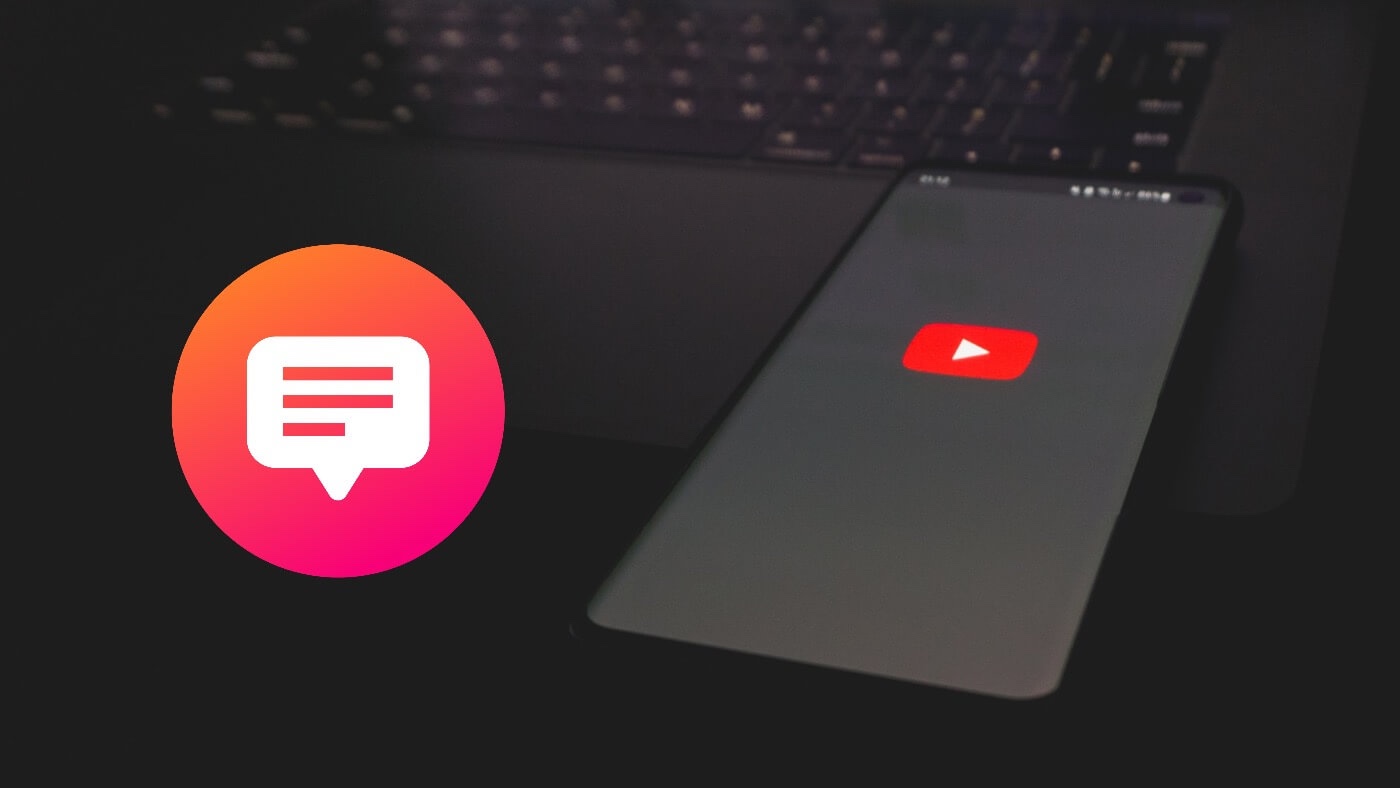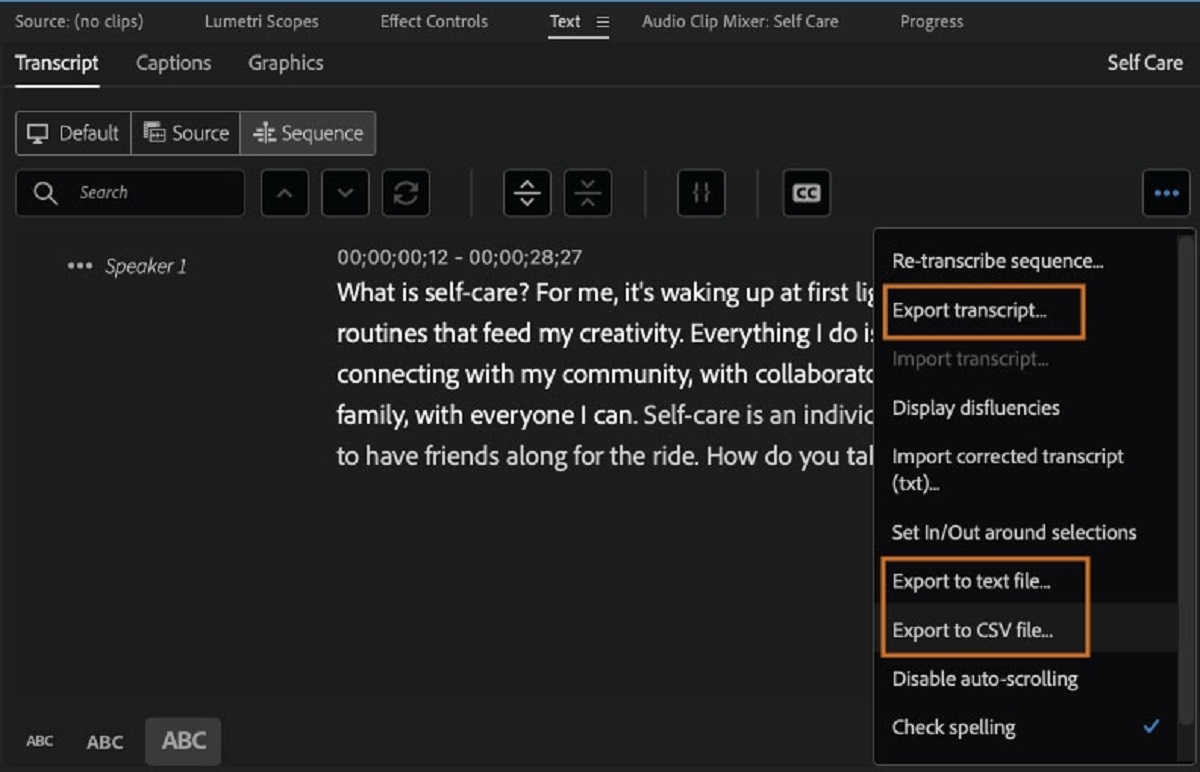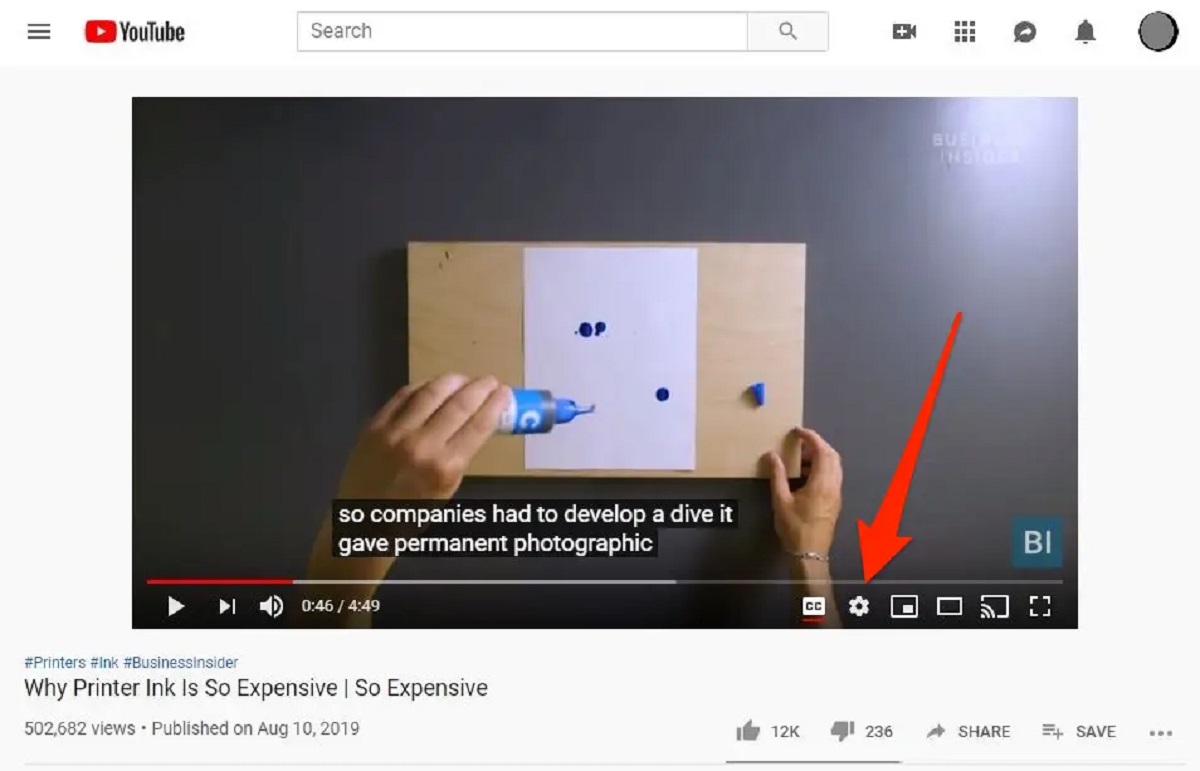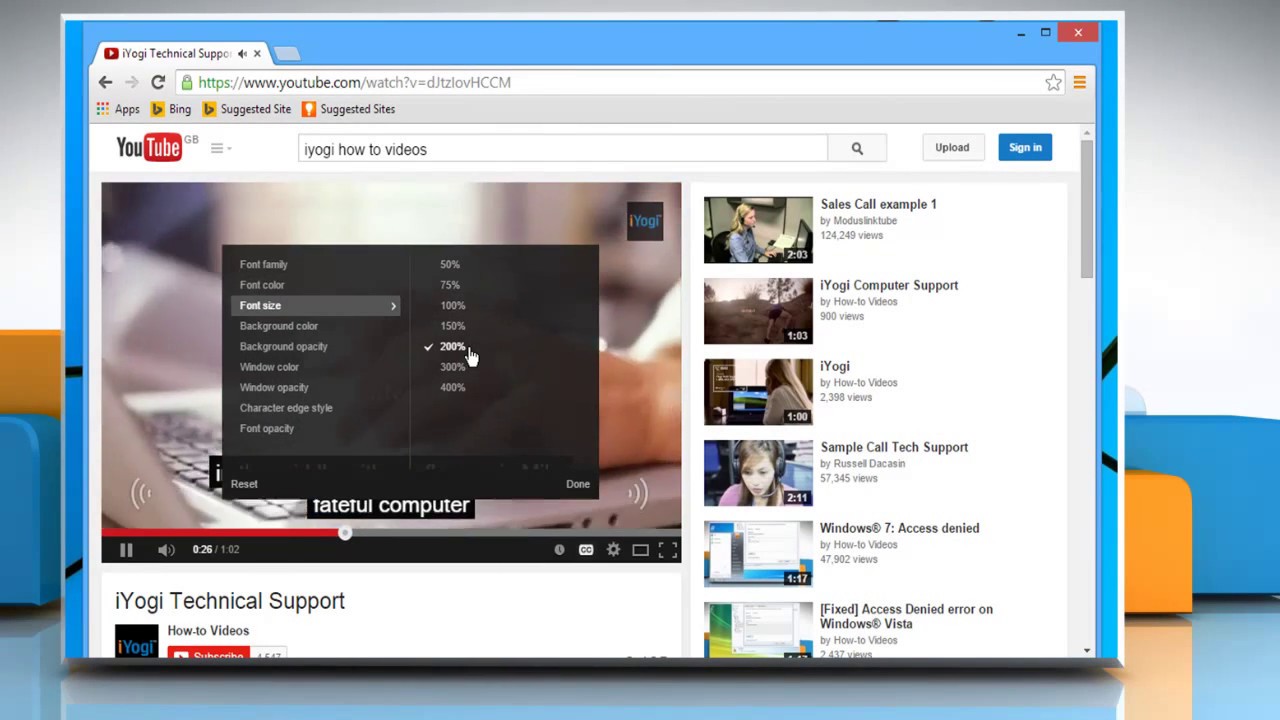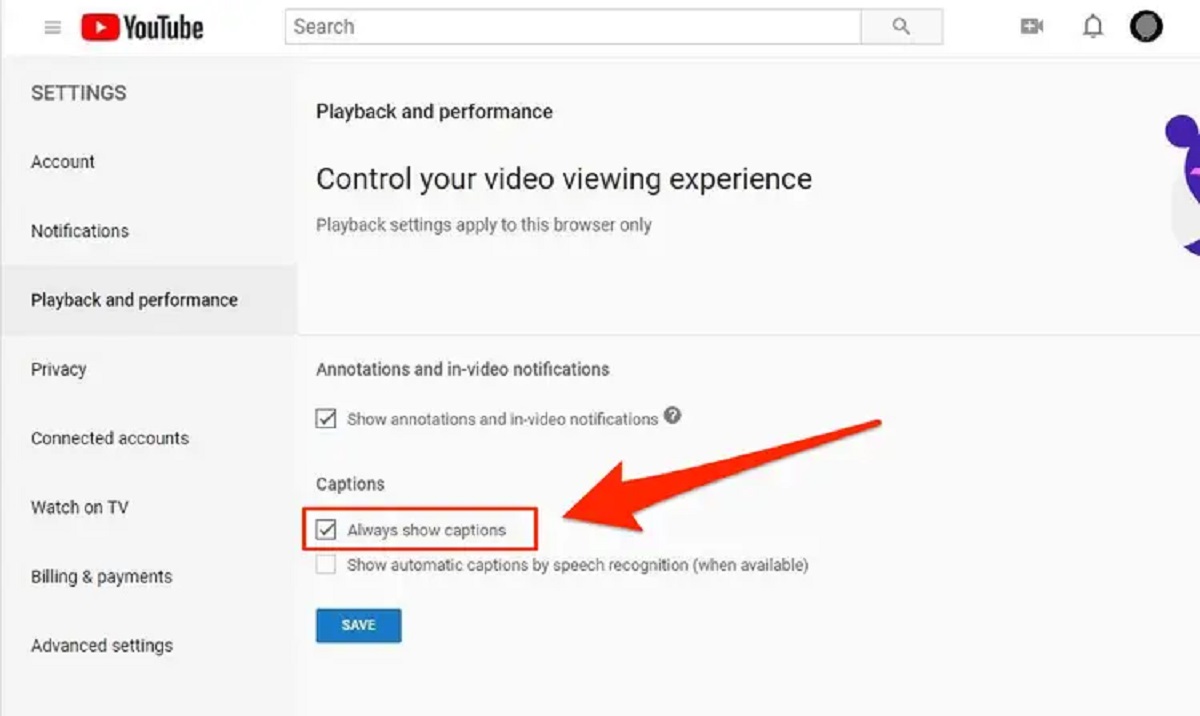Introduction
YouTube has become an integral part of our lives, offering a variety of content ranging from entertainment to education. With millions of users worldwide, YouTube strives to make its platform accessible to all individuals, regardless of their abilities. One crucial accessibility feature that YouTube provides is subtitles, also known as closed captions, which allow viewers to read the dialogue or narration of a video.
Subtitles play a vital role in ensuring equal access to content for individuals who are deaf or hard of hearing. They also benefit non-native speakers, those in noisy environments, and people with cognitive or attention disorders. Understanding the importance of subtitles, YouTube offers a range of options for viewers to customize their subtitle experience. From font size and color to background opacity, users can personalize the appearance of subtitles to suit their preferences.
However, one aspect of YouTube subtitles that remains consistent across all videos is the white color. It begs the question: why are YouTube subtitles universally white? While this may seem like a trivial detail, the choice of subtitle color holds practical and technical reasoning behind it, as well as considerations for user preferences and customization possibilities.
Accessibility and the Importance of Subtitles
Accessibility is a fundamental principle that guides the development of online platforms. YouTube recognizes this and strives to create an inclusive environment where everyone can engage with content, regardless of their individual abilities or circumstances.
For individuals who are deaf or hard of hearing, subtitles are essential in order to understand the audio elements of a video. With subtitles, these individuals can read the dialogue, narration, and other audio cues, allowing them to fully comprehend the content being presented. Without subtitles, they would miss out on crucial information and potentially be excluded from the conversation.
Furthermore, subtitles benefit not only the hearing-impaired but also non-native speakers. English may not be their first language, making it challenging to fully grasp spoken dialogues or accents. Subtitles offer a written representation of the audio, enabling these individuals to read along and better understand the content. This inclusivity extends beyond language barriers and fosters a more diverse and inclusive viewing experience.
Subtitles also have a significant impact on individuals who find themselves in noisy environments. Whether it’s watching a video in a crowded café or on a noisy subway, subtitles help overcome external distractions by providing a visual representation of the dialogue. They ensure that viewers don’t miss important details, enhancing their overall comprehension and enjoyment of the content.
Additionally, subtitles cater to people with cognitive or attention disorders, such as ADHD. These individuals may have difficulty sustaining focus on auditory information for extended periods. Subtitles provide a multi-sensory experience by combining both visual and auditory elements, helping them to better engage with the content and retain information.
The importance of subtitles goes beyond mere accessibility; it promotes equal opportunities for all individuals to access and enjoy online video content. By providing comprehensive subtitles, YouTube enables a more inclusive and accessible platform that celebrates diversity and empowers its users to fully participate in the digital realm.
Different Subtitle Options on YouTube
YouTube understands that individual preferences vary, and as such, offers viewers a range of subtitle options to enhance their viewing experience. These options allow users to customize the appearance of subtitles to suit their unique needs and preferences.
One key aspect of subtitle customization is the ability to adjust the font size. YouTube provides multiple font size options, from small to large, ensuring that subtitles are legible for users with varying visual acuity. This feature allows individuals with visual impairments to comfortably read the subtitles without straining their eyes.
Another important option is the choice of subtitle color. While the default color is white, YouTube allows users to select from a palette of colors to suit their personal preferences or improve visibility based on the video’s background color. This option is beneficial for individuals who may have color vision deficiencies or need higher contrast to read the subtitles effectively.
Furthermore, YouTube provides an opacity control feature that allows users to adjust the transparency of the subtitle background. This feature is particularly useful when subtitles appear on top of on-screen text or graphics, as it enables viewers to see both the subtitles and the underlying content without any obstruction.
Users can also customize the position of subtitles on the screen. YouTube provides options for both the traditional bottom position, as well as the more modern and compact position near the video’s lower edge. This flexibility ensures that subtitles do not interfere with other on-screen elements and can be positioned in a way that best suits the viewer’s preference.
Additionally, YouTube offers the option to toggle between different subtitle languages if the video has multiple language options available. This feature further enhances accessibility for individuals who are multilingual or prefer to read subtitles in their native language.
By providing these customizable subtitle options, YouTube strives to create a personalized viewing experience that caters to the diverse needs of its users. These options empower viewers to tailor subtitles to their liking, ensuring a seamless and enjoyable experience as they engage with the wide array of content available on the platform.
The Default White Color of YouTube Subtitles
One distinctive characteristic of YouTube subtitles is their default white color. While the choice of white subtitles may seem arbitrary, there are practical and technical reasons behind this design decision.
The primary reason for using white subtitles is for maximum contrast and readability. White subtitles stand out prominently against most video backgrounds, ensuring that they are easily visible for viewers. This high contrast helps individuals with visual impairments or lower visual acuity to read the subtitles without straining their eyes.
Furthermore, white subtitles are versatile and compatible with a wide range of video content. Unlike colored subtitles, which may clash or blend in with certain video backgrounds or graphics, white subtitles maintain their visibility across various video styles and themes. This consistency in appearance ensures that subtitles remain easily readable, regardless of the content being viewed.
From a technical standpoint, white subtitles also allow for better video compression and streaming performance. The color white requires less data to encode and transmit compared to other colors, resulting in smaller file sizes and faster streaming speeds. This optimization is crucial for YouTube, as it helps reduce bandwidth usage and ensures smooth playback, even for viewers with slower internet connections.
Moreover, the choice of white subtitles aligns with accessibility guidelines and standards. The World Wide Web Consortium (W3C) Web Content Accessibility Guidelines (WCAG) recommend using high contrasting colors, such as black text on a white background, to ensure legibility for individuals with visual impairments. By defaulting to white subtitles, YouTube adheres to these guidelines and ensures that its platform remains accessible to a wide range of users.
While YouTube offers customization options for subtitle colors, the default white color serves as the standard for accessibility and practicality reasons. It ensures optimal readability, compatibility with various video backgrounds, and efficient video compression, enhancing the viewing experience for all users.
The Practical Reasons for White Subtitles
The choice of white subtitles on YouTube may seem like a simple design decision, but it holds practical reasons that contribute to the overall viewing experience. Here are some practical reasons behind the use of white subtitles:
1. Maximum contrast and readability: White subtitles offer a high level of contrast against most video backgrounds, making them easily visible and readable. The stark contrast ensures that viewers can effortlessly distinguish the subtitles from the rest of the video, enabling them to follow along without any difficulty.
2. Compatibility with various video content: White subtitles are versatile and compatible with a wide range of video styles and themes. Unlike colored subtitles, which may clash or blend in with certain backgrounds or graphics, white subtitles maintain their visibility and legibility regardless of the content being viewed. This consistency eliminates any potential distractions and allows viewers to focus on the subtitles without any hindrance.
3. Accessibility compliance: The choice of white subtitles aligns with accessibility standards, ensuring that YouTube’s platform remains inclusive for users with visual impairments or lower visual acuity. High contrasting colors, such as black text on a white background, are recommended by accessibility guidelines to enhance readability for individuals with visual disabilities. By defaulting to white subtitles, YouTube adheres to these guidelines and prioritizes the needs of all its users.
4. Efficient video compression: From a technical standpoint, using white subtitles helps optimize video compression and streaming performance. The color white requires less data to encode and transmit compared to other colors, resulting in smaller file sizes and faster streaming speeds. This optimization is essential for YouTube’s platform, as it allows for smoother playback, even for viewers with slower internet connections.
5. Consistency and standardization: The use of white subtitles as the default maintains a level of consistency across YouTube’s platform. Viewers can expect a consistent subtitle appearance, regardless of the video they watch. This standardization simplifies the viewing experience and ensures that subtitles are readily available and easily recognizable for all users.
While YouTube offers customization options for subtitle colors, the practical reasons for using white subtitles cannot be overlooked. They prioritize readability, compatibility, accessibility compliance, video compression efficiency, and consistency. These practical considerations ultimately contribute to an enhanced viewing experience for all YouTube users.
The Technical Reasons Behind White Subtitles
The choice of white subtitles on YouTube goes beyond aesthetics and readability. There are technical reasons behind the use of white subtitles that contribute to the overall functionality and performance of the platform. Here are some of the technical reasons behind white subtitles:
1. Optimization for video compression: White subtitles require less data to encode and transmit compared to colored subtitles. The color white is easier to compress, resulting in smaller file sizes. This optimization is crucial for video streaming platforms like YouTube, as it helps reduce bandwidth usage and improves the streaming experience, especially for viewers with slower internet connections.
2. Compatibility with various video formats: White subtitles are compatible with a wide range of video formats. Whether the video is in high definition or standard definition, or whether it is in a particular codec or file format, white subtitles can be integrated seamlessly without any compatibility issues. This compatibility ensures that subtitles are universally accessible to all YouTube users.
3. Consistency across devices and platforms: White subtitles are consistent across different viewing devices and platforms. Whether users are watching YouTube videos on a computer, smartphone, or a smart TV, the white subtitles will appear the same. This consistency makes it easier for viewers to follow along, regardless of the device they are using.
4. Reduced processing requirements: White subtitles place less demand on the processing power of devices. The color white is less computationally intensive compared to colored subtitles, allowing devices to render and display subtitles more efficiently. This efficiency ensures smooth playback and reduces potential lags or delays in subtitle rendering.
5. Integration with automated subtitle technology: YouTube utilizes automated speech recognition (ASR) technology to generate subtitles for videos. The default white color facilitates the accuracy of ASR technology in transcribing audio into readable text. The high contrast of white subtitles ensures clearer and more precise recognition of spoken words, resulting in more accurate transcriptions.
While customization options are available for users to select different subtitle colors, the technical reasons for using white subtitles cannot be overlooked. These technical considerations ensure optimal performance, compatibility, and consistency across different devices and platforms. The utilization of white subtitles as the default color aligns with YouTube’s commitment to providing a seamless and accessible video watching experience for all its users.
The Consideration of Different User Preferences
While YouTube defaults to white subtitles for practical and technical reasons, the platform acknowledges the importance of catering to different user preferences. Recognizing that individuals have varying needs and visual preferences, YouTube offers customization options to enhance the subtitle experience and provide a more personalized viewing journey.
One crucial aspect of customization is the ability to choose from a range of subtitle colors. While white subtitles may be the default, YouTube allows users to select their preferred color from a palette of options. This choice empowers viewers to customize their viewing experience and ensures that subtitles align with their personal preferences and needs.
The customization options also extend to font size, enabling users to adjust the size of the subtitles based on their visual acuity or viewing environment. This flexibility ensures readability for users with varying vision capabilities, making it easier for them to follow along with the video’s content.
Furthermore, YouTube provides an opacity control feature that allows users to adjust the transparency of the subtitle background. This customization option ensures that subtitles do not obstruct the view of the video’s content, particularly if there are on-screen text or graphics. Users can find a balance between having visible subtitles and maintaining a clear view of the underlying content.
Users can also select their preferred subtitle position, choosing between the traditional bottom position or the compact position near the lower edge of the video. This customization option allows users to tailor the subtitle positioning to their liking, ensuring that subtitles do not interfere with other on-screen elements or obstruct their viewing experience.
By offering these customization options, YouTube acknowledges that every viewer is unique and has different preferences when it comes to subtitles. These options allow users to create a viewing experience that suits their visual needs, making the platform more accessible and inclusive for individuals with diverse requirements.
Moreover, YouTube’s consideration of user preferences extends to multilingual viewers. For videos that have multiple language options available, users can toggle between different subtitle languages, allowing them to choose the language that they are most comfortable with or that aligns with their understanding of the video’s content. This feature ensures that individuals with varying language proficiency are included and can fully engage with the video’s message.
Ultimately, YouTube’s commitment to accommodating different user preferences through customization options reflects a commitment to creating a platform that is inclusive, personalized, and adaptable. These options give users the freedom to tailor their subtitle experience to their liking, resulting in a more enjoyable and accessible viewing experience for all.
The Potential for Customization of Subtitles
YouTube recognizes the importance of providing a customizable subtitle experience to its users. With a wide range of features and options available, YouTube offers users the potential to personalize subtitles to their individual preferences. This customization not only enhances accessibility but also allows users to tailor their viewing experience to their liking.
One significant area of customization is the ability to select the font style and size of subtitles. YouTube provides various font options, allowing users to choose a style that suits their taste and readability preferences. Additionally, users can adjust the font size to ensure optimal visibility and legibility based on their visual needs.
Another aspect of customization is the option to choose the color of subtitles. While white is the default color, YouTube provides a range of colors to choose from, enabling users to match the subtitles with their personal preferences or to enhance visibility against specific video backgrounds. This customization offers flexibility and accommodates individuals with color vision deficiencies or a need for higher contrast.
In addition to font and color customization, users also have control over the position of subtitles on the screen. YouTube supports both the traditional bottom position and the compact position near the lower edge of the video. This customization option allows users to find the optimal position that does not interfere with the viewing experience or obstruct other on-screen elements.
Moreover, YouTube provides an opacity control feature, allowing users to adjust the transparency of the subtitle background. This customization option is particularly useful when subtitles overlap with on-screen text or graphics. Users can fine-tune the opacity to ensure that subtitles remain visible while maintaining a clear view of the underlying content.
Beyond these visual customization options, YouTube also caters to multilingual users by offering the ability to toggle between different subtitle languages for videos with multiple language options. This feature allows viewers to select the language that they are most comfortable with, ensuring an inclusive experience for individuals with different language proficiency or preferences.
The customization potential of YouTube’s subtitles provides users with the power to create a viewing experience that aligns with their needs and preferences. By giving viewers control over font style, size, color, position, opacity, and language options, YouTube fosters a personalized and user-centric platform that enhances accessibility and user satisfaction.
As technology advances and user needs evolve, it is likely that YouTube will continue expanding the customization possibilities for subtitles. The potential for customization opens the door for innovative features and user-driven improvements, ensuring that YouTube remains at the forefront of accessibility and user experience in the realm of online video content.
Conclusion
YouTube’s decision to default to white subtitles is not arbitrary but rather based on practical, technical, and accessibility considerations. The white color offers maximum contrast and readability, making subtitles easily distinguishable against various video backgrounds. It also allows for efficient video compression and ensures compatibility across different devices and platforms. The use of white subtitles aligns with accessibility guidelines and standards, prioritizing the needs of individuals with visual impairments and lower visual acuity.
However, YouTube also recognizes the importance of catering to different user preferences and offers a range of customization options. Users can personalize their subtitle experience by selecting font styles, sizes, colors, and positions that best suit their preferences and needs. The potential for customization extends to multilingual viewers, who can toggle between different subtitle languages, enhancing inclusivity and enabling a more immersive experience for all users.
As YouTube continues to evolve and adapt to user feedback, it is likely that more customization options will be introduced to further enhance the subtitle experience. The platform remains committed to providing an accessible and user-centric environment, ensuring that individuals from all walks of life can engage with and enjoy the vast range of content available on the platform.
In summary, the choice of white subtitles on YouTube has practical, technical, and accessibility reasons behind it. While it is the default color, YouTube offers customization options to cater to different user preferences. By striking a balance between standardization and personalization, YouTube strives to create an inclusive and customizable subtitle experience that enhances accessibility, readability, and user satisfaction.







